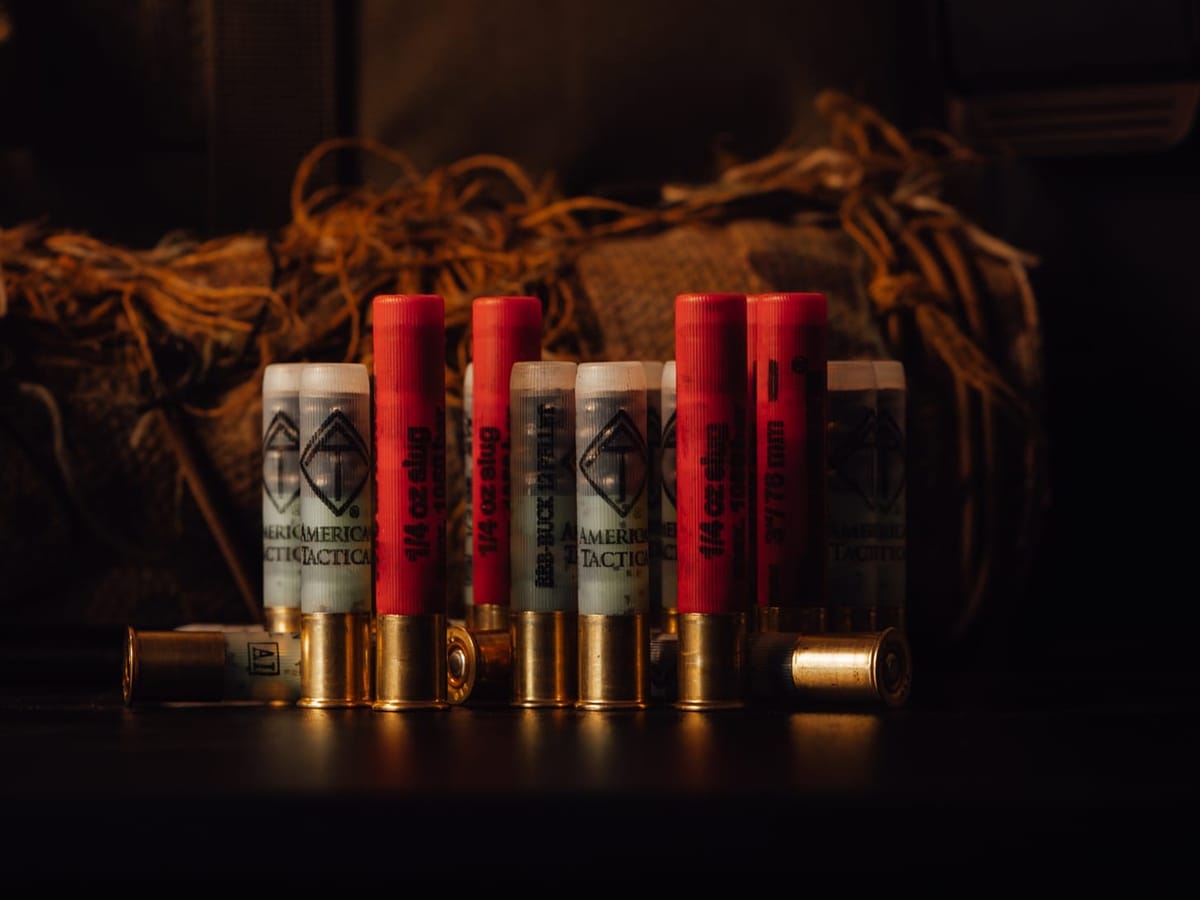A Small Shell with a Big Personality
The .410 cartridge doesn’t get the credit it deserves and is often overshadowed by its bigger, harder-hitting 12 and 20 gauge cousins. So much so that it’s often criticized as a weak cartridge, comparable in stopping power to something closer to the .17 HMR.
Maybe it’s just misunderstood.
Its lighter recoil and smaller payload are often seen as being underpowered, but in the right hands and in the right applications, the .410 delivers reliable, effective performance. It’s one of those rounds that people love to diss, grumble, and groan a bit… until they actually get a little trigger time with it.
Sure, it won’t take a hog at extended ranges, and it’s probably not the first thing you’ll think to grab for a trip to the duck blind. But for dropping close-range targets and dispatching coyotes and other barnyard pests, the .410 pulls more weight than folks like to admit.
The truth is, it’s not some gimmick that’s better left to the ladies or youth shooters. It’s a versatile, capable cartridge with a niche all its own. And while it may not make be breaking any records for it’s firepower or effective range, there’s a reason it’s stuck around for well over a century.
A Quick Primer on the .410
First off, you might’ve noticed that it’s referred to as the .410 bore, rather than .410 gauge.
Most shotgun bores are measured using the common “gauge” denomination, where the number represents how many lead balls the diameter of the bore it would take to equal a pound. A 12 gauge takes twelve, a 20 gauge takes twenty, and so on.
But the .410 is measured by its actual bore diameter (.410 inches across the bore). It’s the only mainstream shotgun size in the U.S. that is an exception to the traditional gauge system.
Why the exception?
Simple, really. The .410 is essentially a small-bore shotgun. If the .410 were measured using the traditional gauge system of using lead balls to equal a pound, it would be some impractical number like 68 gauge. So, somewhere along the way, it was decided that using its actual bore diameter is more practical; more “straightforward.”
I don’t know, I guess it sounded good on paper.
It’s silly and I think the gauge system makes more sense. It’s an oddball for sure, and that alone makes it a bit of an icon; a real piece of Americana. Well, sort of.
A Brief History of the .410
The .410 has been around longer than most folks realize. It was first developed in Europe in the late 1850s, gradually making its way stateside as manufacturers realized there was a market for a lightweight, low-recoil shotgun. Early .410s were typically single- or double-barrel break-action guns, handy for small game hunting and pest control around the homestead.
Over time, the .410 found its way into compact survival guns, snake guns, and eventually those big-bore revolvers like the Taurus Judge and Smith & Wesson Governor, allowing it to become more of a defensive round.
That said, it was never designed to compete with 12 or 20 gauge. And it doesn’t. At all.
However, there’s more to the “little” .410 bore than people give it credit for. And while it’s still unfairly written off by some as a beginner’s round or a novelty, it’s been dispatching slithering “nope ropes” and warding off small predators for well over a century.
What’s It Good For?
The .410 isn’t much of a powerhouse when compared to other shotgun cartridges. We’ve pretty well established that, right?
But it’s definitely a very capable round in its own right, and it doesn’t hurt that .410 bore scatterguns are just downright fun to shoot.
Inside about 25 yards, the .410 is great for small game targets and upland birds. Toss in a defensive load like 000 buck or a slug, and, well, I pity the fool.
While internet gun snobs turn their noses up a bit at the .410 bore as a potential home defense weapon, modern .410 defensive loads aren’t to be trifled with. They pack just enough of a punch and I’d be willing to bet good money that they’d definitely ruin a bad guy’s day.
Why People Still Love the .410
Even with its limitations, the .410’s got a die-hard fanbase. And it’s easy to see why.
The .410 bore is the last simple shotgun cartridge. It hasn’t been overdeveloped. Nor have .410 firearms become over-accessorized.
The .410 does exactly as its intended to. Nothing more; nothing less.
Final Thoughts
The .410 Bore might not be a powerhouse by typical shotgun standards, but it’s not built to be. It’s great for chasing rabbits, clearing out the back forty, and fending off bad guys in a pinch. But better than that, it’s just a fun, easy-shooting cartridge that’s hard not to love.
Looking to add some .410 Bushmaster to your stockpile for the month of July? Head over to your AmmoSquared account and make sure you’ve got the shells you need for your next hunt, range trip, or backyard plinking session… because running out of hard-to-find ammo when you need it most is a rookie move.
Learn how >>
Read the full article here

